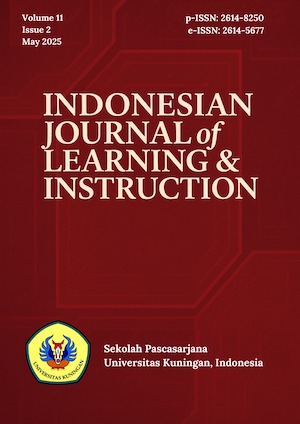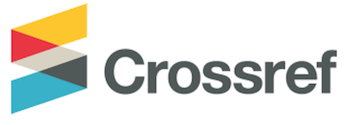STUDENTS’ AND TEACHERS’ PERCEPTION OF THE IMPLEMENTATION OF E-LEARNING: INDONESIAN CASES
Abstract
This study aims to provide information about teachers’ and students’ perceptions learning implementation based on e-learning which has been conducted at Vocational High School Karya Nasional (Karnas) in Kuningan regency on July - December 2019. This study used a survey method with Likert scale 1-5. The population in this study are 50 students and 50 teachers of Vocational High School Karnas. The instrument used is a questionnaire to capture the perception of students and teachers on the learning implementation based on e-learning at school which has been applied at school. Reliability of the results obtained from the calculation value of r 0.97 for the questionnaire distributed to the teachers and r 0.99 for questionnaire distributed to the students. The results of students and teachers perceptions study learning based on implementation of e-learning at Vocational High School Karnas based on teachers respondent answers to perceptions of infrastructure aspects indicator showed 3.86 as the mean value. On the perception of the education management aspects indicators showed 3.61 as the mean value. In the perception of human resources aspects, the mean value is 3.51. Based on students respondent answers perceptions of the infrastructure aspects indicator showed 3.84 as the mean value. In the perception of the management aspects of education indicators, the mean value is 3.47. In the perception of human resources aspects, th mean value is 3.79. Based on the results of this study, it can be concluded that learning based on implementation of e-learning in Vocational High School Karnas is not well, because the internet conection are sometimes slow and disconnected, there are some teachers and students who do not understand about information technology and communication, also do not understand the procedure of learning implementation based on e-learning, and there are still some students who do not have a laptop / net book thus hindering the learning process.
Keywords: perceptions; e-learning; learning outcomes
References
Allen, M. (2013). Guide to E-learning. Canada: John Wiley & Son.
Ardiansyah. (2013). Rancang Bangun Web- Site E- Learning. PT. Rineka Cipta.
Chandrawati, S. R. (2010). Pemamfaatan e-learning dalam pembelajaran. Jurnal Cakrawala Kependidikan, 8(2), pp.101–203.
L. Tjokro, S. (2009). Presentasi yang Mencekam. Jakarta: Elek Media Komputindo.
Nursalam. (2008). Pemanfaatan E- Learning dalam Pembelajaran. Jakarta: Salemba Medika.
Pranoto, A., et al. (2009. Sains dan Teknologi. Jakarta: PT Gramedia Pustaka Utama.
Retnoningsih, A. & Suharso. (2005). Kamus Besar Bahasa Indonesia. Semarang: CV. Widya Karya.
Rosenberg, M. J. (2001). E- Learning Strategiesfor Delivering Knowledge. Mc. Graw Hill: New Jersey.
S Ratih, M. E. (2011). Persepsi Mahasiswa Dalam Penerapan E-Learning untuk Meningkatkan Kualitas Pendidikan (Studi Kasus Pada Universitas Islam Indonesia) [Skripsi]. Fakultas Ekonomi Universitas Pembangunan Nasional Jawa Timur.
Slameto. (2013). Persepsi dan Evaluasi Pendidikan, Cetakan ke-4. Jakarta: Bumi Aksara
Sugiyono. (2015). Statistika untuk penelitian. Bandung: Alfabeta
Toha, M. (2003). Perilaku Organisasi Konsep Dasar dan Aplikasinya. Jakarta: Grafindo Persada.
Walgito, B. 2010. Pengantar Psikologi Umum. Yogyakarta. CV Andi.









